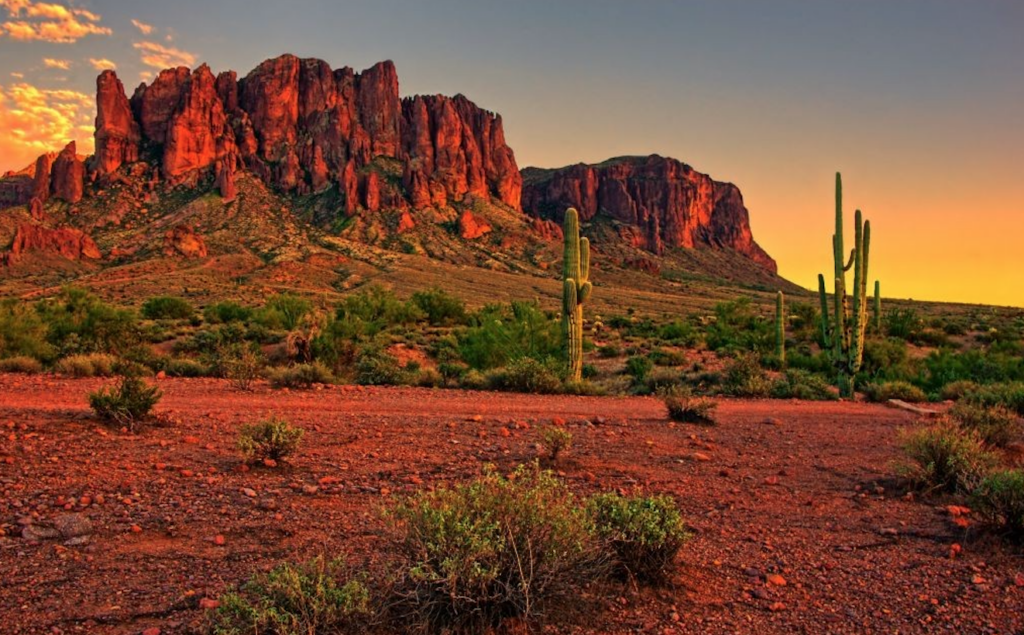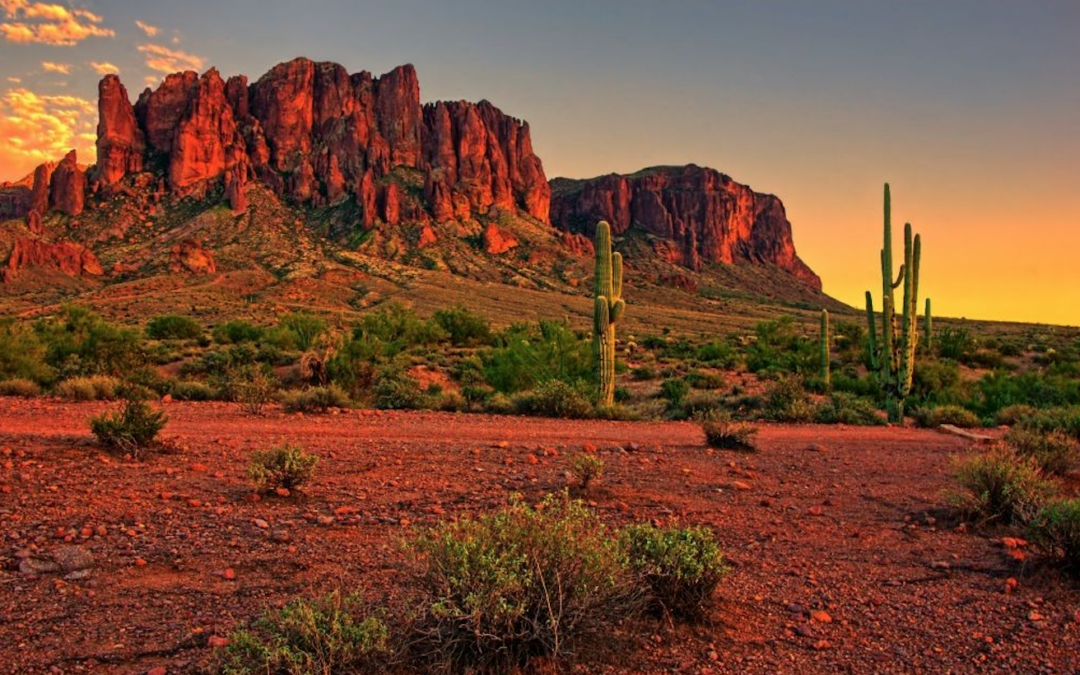
Arizonans like to call this place a land of anomalies and tamales because of the contrasts and contradictions that make the Grand Canyon State unique. For example, it’s not uncommon for the state to have the nation’s hottest and coldest temperatures on the same day.
The first white man to come to Arizona was a black man. An African named Esteban arrived in 1539 as a scout for the Coronado Expedition. The first cattle baron was a woman, Eulalia Elias. She was “boss lady” of the 130,000 acre San Juan de Babocamari Mexican land grant from 1832 until the Apache drove them out sixteen years later. It was the first major cattle operation in what later became Arizona north of today’s Sierra Vista.
The commanding officer in the Spanish Army who founded the new presidio in August 1775 that would become the city of Tucson was a red-headed Irishman named Hugo O’Conor. The Indians called him “Captain Red.”
The first native Arizona cowboy movie star was a cowgirl. Dorothy Fay Southworth of Prescott headed out to Hollywood in the 1930s and was soon starring in western movies. In 1941, she married her favorite leading man, one of Hollywood’s most popular singing cowboys, Tex Ritter and was the mother of the late actor John Ritter.
The Lost Dutchman was a German and the Gunfight at OK Corral didn’t occur at the OK Corral. The storied fight took place on Fremont Street between Fly’s Photograph Gallery and the Harwood House. The famous Navajo Taco was invented by a Greek immigrant and New York’s popular mayor, Fiorello La Guardia, was raised in Prescott.
Town and counties tend to confuse newcomers. The town of Gila Bend is located, not in Gila County, but in Maricopa County. The town of Maricopa is in Pinal County. Santa Cruz isn’t in Santa Cruz County; it’s in Pima County. The community of Pima is found in Graham County. Fort Apache is in Navajo County while Navajo is in Apache County.
Arizona’s youngest county, La Paz, is officially America’s oldest. The reason for this contradiction? One-third of the population, according to the U.S. Census Bureau is sixty-five years old or older.
Many of Arizona’s place names are a mix of Indigenous tribes, Spanish and local American colloquialisms. The following are a few examples. The Mogollon Rim, known as the “Arizona’s Backbone,” is named for a 16th century Spanish Governor, Juan Ignacio Mogollon. It’s pronounced either “Muggy-on or Muggy own. The old frontier military post in Cochise County, Fort Huachuca, is pronounced “Wa-CHOO-kuh.” Those lofty peaks we call the Four Peaks, northeast of the Salt River Valley, are in the “Mah-zaht-zahl” mountain range. Locals have simplified it to Mat-a-zel. That venerable Spanish mission south of Tucson, San Xavier is not pronounced San Ex-Zavier, or San Zavier, its San Ha-vier. Casa Grande, the town and National Monument in Pinal County is usually pronounced Cass-ah-Grand but the correct way is to call it is Cossa-Gron-day. The first Territorial Capital of Arizona, Prescott was named for historian William Hickling Prescott. A word to the wise: It’s not a good idea to correct the pronunciation Pres-cot in front locals many of whom prefer Press-kit or Press-cutt. Arizona’s most historic river, the Gila flows some 630 miles in a westerly direction across Arizona and connects with the Colorado River at Yuma. Its correct pronunciation is Hee-la. Arizona’s usually dry rivers are known for their sometimes capricious behavior too. In 1885, the citizens of Florence petitioned the territorial legislature for a bridge across the Gila River so they could get to the Salt River Valley when the river was up. They got their appropriation and the bridge was built and dedicated. One morning the citizens looked out to see the fickled river had changed its course, bypassing the bridge leaving it standing alone in the desert.
In 1846 when the Mormon Battalion crossed Arizona during the Mexican War, Lieutenant George Stoneman decided to test the navigability of the Gila. His men built a raft and loaded it with supplies and the young lieutenant cast off into the Gila, floated a short distance before the naval craft sank. Like any good skipper, Stoneman went down with his ship……..then walked ashore. Far as we know, it’s the only U.S. naval vessel to sink in the Gila. Two years later the Howard family was floating down the Gila when a Mrs. Howard, who was expecting, decided the time had come. They pulled ashore; she gave birth to a baby boy and promptly named him Gila. Gila Howard became the first American baby born in what would become Arizona.
During the 1920s the federal government decided to build a dam on the Gila. Unfortunately, the surveyors picked an unusually wet year. They picked a site in a narrow canyon east of Hayden. The dam was built and named Coolidge for the former president but by the time it was dedicated Arizona was in another drought and nothing but tall weeds grew where the lake was supposed to be. Calvin Coolidge was there but he didn’t have much to say about the waterless reservoir. He wasn’t known as “Silent Cal” for nothing. But humorist Will Rogers was and he was never at a loss for words. He looked out across the sea of weeds and quipped, “If that was my lake, I’d mow it.”
Senator Barry Goldwater told a story about his grandfather Mike, who had a store in the Colorado River port city of La Paz. He woke up one morning to find the river had changed its course and La Paz was perched on the banks of a dry arroyo. He packed his merchandise in a wagon and set out to find it and when he did the store was re-built. He named the new town Ehrenberg for an old friend.
I can’t vouch for the veracity of this story but, as Mark Twain said, “If it didn’t happen this way it coulda happened this way.”
Yuma County folklore says an old harridan by the name of Hazel Breadsacker owned a ranch down along the Colorado River near Yuma. Her west pasture backed up to the river that was known for changing its course without warning. She looked out one morning to find it had cut a new path around the east side of her place.
A local newspaper reporter asked Hazel what she thought of becoming a Californian. With a straight face she replied, “That’s okay with me, I don’t think I could stand to spend another summer in Arizona anyway.”






